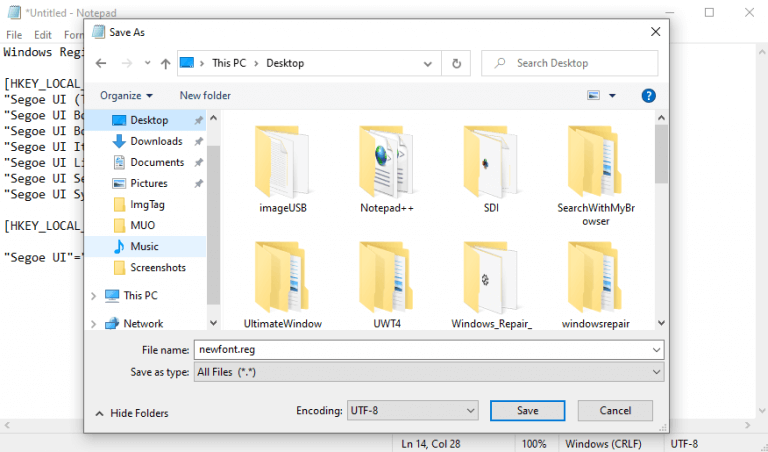
Feeling bored by the familiar font of your Windows operating system?
Even though the default fonts provided by Microsoft—Segoe UI for Windows 10, and Segoe UI variable for Windows 11—looks pretty neat on the screen, you don’t have to settle if you have grown bored with them; especially when you can easily alter them with the Windows Registry.
Let’s learn how.
How to change default font in Windows 10 or Windows 11
Before you begin editing your Registry, we’d advise you to first make sure that you’ve backed it up. Alternatively, you can create a backup for your whole system—which you should be doing regardless at regular intervals.
After you’ve backed up your Registry, follow the steps below to tweak the font:
- Go to the Start menu search bar, type in ‘notepad,’ and select the Best match to open the Notepad.
- Copy and paste the below code into the Notepad editor:
Windows Registry Editor Version 5.00 [HKEY_LOCAL_MACHINESOFTWAREMicrosoftWindows NTCurrentVersionFonts] "Segoe UI (TrueType)"="" "Segoe UI Bold (TrueType)"="" "Segoe UI Bold Italic (TrueType)"="" "Segoe UI Italic (TrueType)"="" "Segoe UI Light (TrueType)"="" "Segoe UI Semibold (TrueType)"="" "Segoe UI Symbol (TrueType)"="" [HKEY_LOCAL_MACHINESOFTWAREMicrosoftWindows NTCurrentVersionFontSubstitutes] "Segoe UI"="NEW-FONT-NAME"
- In the code above, replace the “NEW-FONT-NAME” with the font that you’d like to use. To find the code, go to Settings > Personalization > Fonts. From there, select the font you want to use now. For example, we’ll use the Times New Roman font here. Click on the font you’d like to use and paste it’s name in place of NEW-FONT-NAME, and you’re good.
- Click on File > Save as and set the ‘Save as type’ drop down to All files.
- Enter a desired file name but make sure it ends with the .reg extension.
- Click on Save.

When you’re done, open the .reg file you just saved. You’ll see a warning dialog box but don’t panic. Ignore it and continue with your changes by clicking on Yes. You’ll be a met with a dialog box confirming your changes.
Click on OK. To solidify your changes, simply restart your PC and you’ll be done.
Changing default font in Windows 10 or Windows 11
As we can see, changing the font in Windows 10 or Windows 11 computer is a simple process. Before you proceed with the changes, though, just make sure you keep the backup of your Registry, and you’ll do fine.